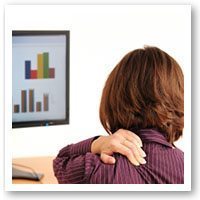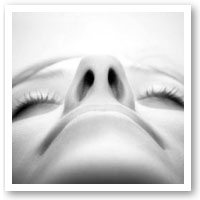Posts
Chiropractic and Pregnancy
/in Chiropractic /by Andrew Your body goes through many changes during pregnancy, and it is amazing at how well it adapts and accommodates for the increasing size of the baby, and then in preparation for the birthing process. Chiropractic can be helpful in several ways as your body goes through these changes.
Your body goes through many changes during pregnancy, and it is amazing at how well it adapts and accommodates for the increasing size of the baby, and then in preparation for the birthing process. Chiropractic can be helpful in several ways as your body goes through these changes.
As the baby grows your body is having to carry more weight which will put some strain on your body especially the lower back. With the increased size of the baby naturally your stomach enlarges which causes your centre of gravity to a more forward position. Then as the baby gets even larger it will often push on different structures of your body, this will commonly affect your ribs, particularly at the front, as they try to accommodate the baby. Then, close to the end of the pregnancy ligaments begin to loosen in preparation for the birth, and this can make the pelvis feel loose and unstable.
All these factors can and often do create some aches and pains, particularly if you have a history of back pain, but they are all things that can be gently treated with Chiropractic. Chiropractic helps by allowing the pelvis, back and ribs to remain mobile, which assists it in smoothly adapting through the process of those changes. as stable as possible. This helps to minimise any aches and pains that occur in this time, and keeps the muscles relaxed and loose. By keeping these joints moving well during pregnancy will make it easier for you to keep active and exercising which can help lead to having an easier labor.
Chiropractic can also help post pregnancy. After giving birth some women can feel very unstable in the pelvis, or they may have a separation and inflammation of the pubic bones. Then breastfeeding and even carrying a baby can often result in upper back and shoulder pain and stiffness. Chiropractic care is very effective in helping your body cope with these new postures and tasks, and generally getting your body back to its healthy and balanced state.
Neck and shoulder pain exercises.
/in Chiropractic /by Andrew Neck and shoulder pain is a very common ailment in today’s times, and it is almost always due to our posture, especially when our days are spent at a desk usually in front of a computer. Firstly the position we are in is not always the most ergonomic. We are all different heights and sizes and desks and chairs don’t always accommodate for these differences. We may be using 2 monitors and moving left to right to work on both, or twisting to get folders from shelves that are next to us or behind us.
Neck and shoulder pain is a very common ailment in today’s times, and it is almost always due to our posture, especially when our days are spent at a desk usually in front of a computer. Firstly the position we are in is not always the most ergonomic. We are all different heights and sizes and desks and chairs don’t always accommodate for these differences. We may be using 2 monitors and moving left to right to work on both, or twisting to get folders from shelves that are next to us or behind us.
Secondly we may be sitting at your computer for hours at a time without getting up and having a break, and then to compound that we can be so focused on what we are doing we often forget to sit up correctly and often end up with a rounded lower back, a forward head position and rounded shoulders. This will almost always lead to tight muscles and pain in the shoulders, between the shoulder blades, and up into the neck. It can often contribute to headaches also. Then as a consequence of these tight muscles it becomes more difficult to maintain a good posture, so it then becomes a cycle of poor posture leading to muscle spasm, causing poor posture.
Some simple things you can do to stop this cycle from occurring!
- Firstly be mindful of your office/desk setup. Have your computer square in front of you with the monitor at a height so that the centre of the screen is at a 15degree down angle from your eyes. Have the monitor as far away from you as possible while still comfortable for you to read. It should be a minimum of 50cm. Also have your computer at right angles to a lit or window to minimize any glare on the screen. The keyboard should be situated such that your elbow is at 90 degrees, or even slightly lower. This helps your wrist to be straight and reduces the potential for a repetitive strain injury. Have your chair at a height so that your feet are flat on the ground and thighs are perpendicular to the floor.
- Secondly, be conscious of your body. No matter how ergonomic your desk setup is, it wont help if you dont think abouthow you’re sitting. Most importantly, don’t slouch. try and sit with your back straight and your shoulders back and down. Have your head up and try to elongate your neck. Get up every 20min to have a walk around, and a stretch.
- Thirdly, stretch…
- At work
- Neck – by bending it gently to the left hold it for 10 sec, bring your head back to neutral, then repeat 4 more times. Do the same with the neck bent to the right. Then also forward by tucking your chin in and bending it towards your chest. Then bend your neck backwards by looking up to the ceiling. While doing these stretches keep your shoulders down.
- Shoulders – loosen up your shoulders by firstly shrugging the shoulders, hold them up for 5 sec then let them drop. Repeat this 4 times.
- Roll your shoulders slowly backwards bringing them as far up, back, down and forward as possible. Do this 5 times. Then roll them slowly forwards 5 times, again bringing them as far up, forward, down and backwards as possible.
- At home
- At the end of the day when you get home get a small rolled towel, about 10-15cm in diameter. While lying on your back place the rolled towel across the back of your neck. Push your head back towards the ground and hold it for 5 sec, then relax for 5 sec. Then repeat 4 more times.
- Next have a rolled up towel that is about 25-30 cm long and about 8 cm in diameter. Lying on your back and place the towel along the length of your spine between your shoulder blades. You can also place a low pillow under your head to make sure your neck is comfortable. Lying on the towel in this way allows your shoulders to relax back, and they also relax down. It allows your shoulder muscles and those between your shoulder lades to relax and release. This exercise helps release tight muscles but it also helps improve your posture, that why it’s good to get in the habit of doing this exercise even if you’re not feeling sore or tight.
- At work
Living The Art Of Breathing.
/in Acupuncture /by Andrew
- Reduced oxygen content.
- Fatigue.
- Postural problems.
- Digestive complaints and bloating.
- Increased muscular tension especially in the neck and shoulders.
- Lower back pain.
 Healthy breathing is when the area between the lower ribs bulges out on the in-breath and deflates on the out-breath. This makes sure that air is drawn into the lower parrts of the lungs. The breathing pattern should be slower, even and gentle. Drawing attention to your breath for 20 minutes per day will improve the way you breathe and your general well being, strengthen your lungs, regulate metabolism and help regulate your emotions and response to stress.
Healthy breathing is when the area between the lower ribs bulges out on the in-breath and deflates on the out-breath. This makes sure that air is drawn into the lower parrts of the lungs. The breathing pattern should be slower, even and gentle. Drawing attention to your breath for 20 minutes per day will improve the way you breathe and your general well being, strengthen your lungs, regulate metabolism and help regulate your emotions and response to stress.
